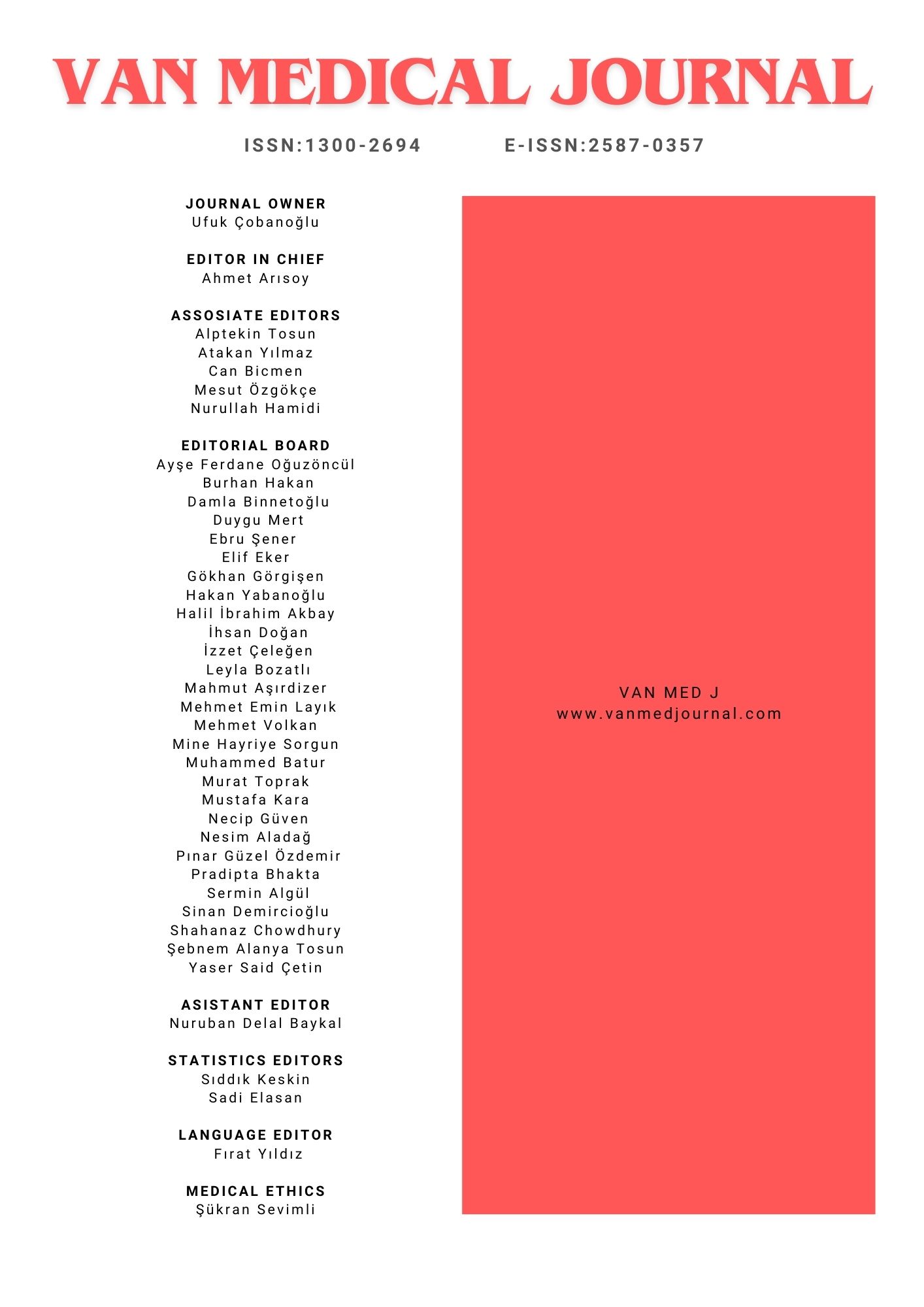A Comparative Study of the Intestinal Parasites in the two Groups of People with Different Socio-Economic Status
Hasan Yılmaz1, İmdat Dilek2, M.Kürşat Türkdoğan3, Reha Erkoç41Yüzüncü Yıl Üniversitesi Tıp Fakültesi Mikrobiyoloji ve Klinik Mikrobiyoloji ABD, Van2Yüzüncü Yıl Üniversitesi Tıp Fakültesi İç Hastalıkları ABD, VAN
3Yüzüncü Yıl Üniversitesi Tıp Fakültesi İç Hastalıkları ABD, VAN
4Yüzüncü Yıl Üniversitesi Tıp Fakültesi İç Hastalıkları ABD, VAN
This is a comparative study in which the prevalence of intestinal parasites in two groups of people with different social, cultural and economical status was investigated. Both groups were is the same sex and age. 165 teenagers (14-17 years old) participated in the study, 65 workers from Van Industrial Estate and 100 students from Serhat Scientific High School. Stool samples taken from all subjects were first examined by native-lugol and iron-hematoxylin staining methods, then flotation and sedimentation methods were applied. One or more species of parasites were found in 48 out of 65 young workers (73.8%) and in 28 out of 100 students (28.0%). Among the workers, Entamoeba histolytica was 13.8%, Entamoeba coli 29.2%, Blastocystis hominis 10.8%, Giardia intestinalis 16.9%, Ascaris lumbricoides 29.2%, Trichuris trichiura 1.5%, Enterobius vermicularis 6.2%, Taenia saginata 1.5% and Hymenolepis nana 6.2%. Whereas, the ranges in the High School students were as follows: E.coli 9.0%, Iodamoeba butschlii 2.0%, B.hominis 3.0%, G.intestinalis 9.0%, A.lumbricoides 5.0%, Trichuris trichiura 1.0% and E.vermicularis 1.0%. The prevalence in these groups was evaluated using ?2 test and the result was significant (p<0.001).
Keywords: Iintestinal parasites, socio-economic status, VanVan’da Sosyo-Ekonomik Düzeyleri Farklı İki Grupta Saptanan Barsak Parazitlerinin Karşılaştırılması
Hasan Yılmaz1, İmdat Dilek2, M.Kürşat Türkdoğan3, Reha Erkoç41Yüzüncü Yıl Üniversitesi Tıp Fakültesi Mikrobiyoloji ABD, Van2Yüzüncü Yıl Üniv. Tıp Fak. Hematoloji BD, Van
3Yüzüncü Yıl Üniversitesi Tıp Fakültesi İç Hastalıkları ABD, VAN
4Yüzüncü Yıl Üniversitesi, Tıp Fakültesi, İç Hastalıkları Nefroloji AD, Van
Bu araştırma, Van’da sosyo-kültürel ve ekonomik düzeyleri farklı aynı cinsiyet ve aynı yaş grubundan iki toplumda barsak parazitlerinin görülme sıklığını ortaya koymak ve bulunan oranları karşılaştırmak amacıyla yapıldı. Çalışma, yaşları 14-17 arasında değişen Van Sanayi Sitesi Çırakları ile aynı yaş grubuna ait Özel Serhat Fen Lisesi öğrencileri arasında yapıldı. Araştırmaya, sadece erkek bireyler alındı. Çalışmada, Sanayi Sitesi çıraklarından 65, Lise öğrencilerinden ise toplam 100 kişiden dışkı örneği alındı. Dışkı örnekleri, Yüzüncü Yıl Üniversitesi Tıp Fakültesi Parazitoloji Laboratuvarında önce nativ-lugol ve demir-hematoksilen boyama yöntemleri ile, daha sonra flotasyon ve sedimentasyon yöntemleriyle yönünden incelendi. Van Sanayi Sitesi çıraklarından 65 kişinin 48’inde (%73.8), Özel Serhat Fen Lisesi öğrencilerinden ise 100 kişinin 28’inde (%28.0) bir veya daha fazla parazit türü saptandı. Araştırmada çıraklarda Entamoeba histolytica %13.8, Entamoeba coli %29.2, Blastocystis hominis %10.8, Giardia intestinalis %16.9, Ascaris lumbricoides %29.2, Trichuris trichiura %1.5, Enterobius vermicularis %6.2, Taenia saginata %1.5 ve Hymenolepis nana %6.2 oranında saptandı. Lise öğrencilerinde E.coli %9.0, Iodamoeba butschlii %2.0, B.hominis %3.0, G.intestinalis %9.0, A.lumbricoides %5.0, T.trichiura %1.0 ve E.vermicularis %1.0 oranında saptandı. Bu iki toplumda saptanan parazitlerin görülme sıklığı, ?2 testine göre değerlendirildi ve sonuçlar çok anlamlı bulundu (p<0.001).
Anahtar Kelimeler: Barsak parazitleri, Sosyo-ekonomik düzey, VanManuscript Language: Turkish

